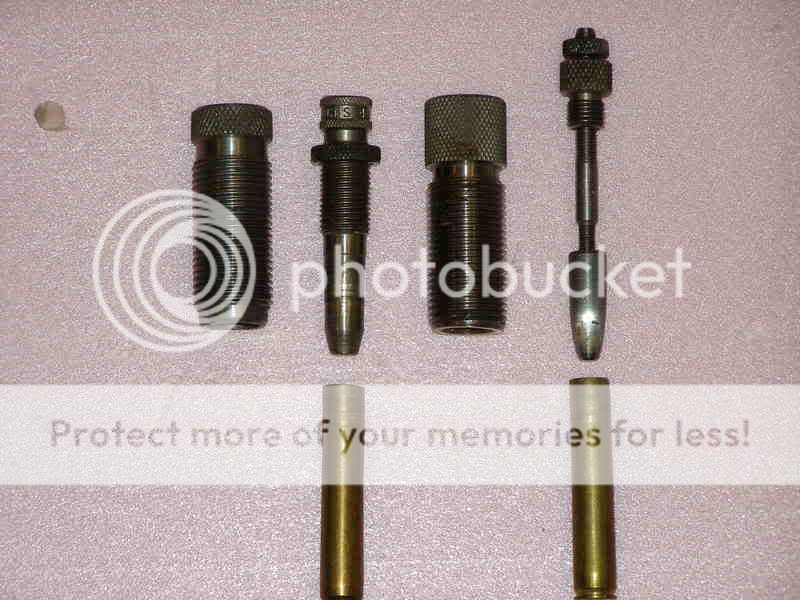| DarylS |
| (.700 member) |
| 20/09/19 07:14 AM |

|
|
|
You can neck up 7RemMag brass to work, however it can be a good idea to neck them up to .308 or 8mm to start with, as in intermediate step.
Doing this might be better than trying to fire-form a short mag. case from 7mm up to .375 in one "shot" using a fast handgun or shotshell powder & wad of tissue or wax as some do.
This is possible, but necking them up first will be a much better way of making brass to fit.
I have made my own wildcat .375 brass from .25/06 and .270 Winchester, but using .30/06 or .35 calibre brass is easier.
To do this, you need a couple or 3 expander buttons & a die that will 'hold' them.
This is what I use:

These are the steps used.
basic case - in this instance, a .30/06 case.
Next is necked straight in one pass, using a die with 'necking' button. As noted, if the nose of the expander button is small enough, as on the right hand one that I made, I could neck up .270 cases straight if they were new or once fired only.
After necking straight, I used a .375 Styer FL die, to neck the cases down to hold a .375 bullet with a crush fit on the new shoulder.
Fireformed - used normally 225gr. Hornady or 235gr. Speer bullets - with full power loads. I do not believe in using reduced loads for fireforming as oft times, the cases do not form properly and can end up with excessive headspace (to the shoudler).
Reloaded in formed brass with 270gr. TSX and 300gr. Interbond bullets.

The main reason for necking the brass straight first, then necking to calibre, is to position the shoulder so it is a crush (felt) fit when chambering. This prevents case stretching starting at the web. Once started, they continue.
You should be able to use CH4D "standard" dies for the .375 Chatfield-Taylor - according to the measurements you provided. They do look quite standard.
Normally I do not push this brand of dies, however, their normal run of this chambering will work just fine, I am positive.